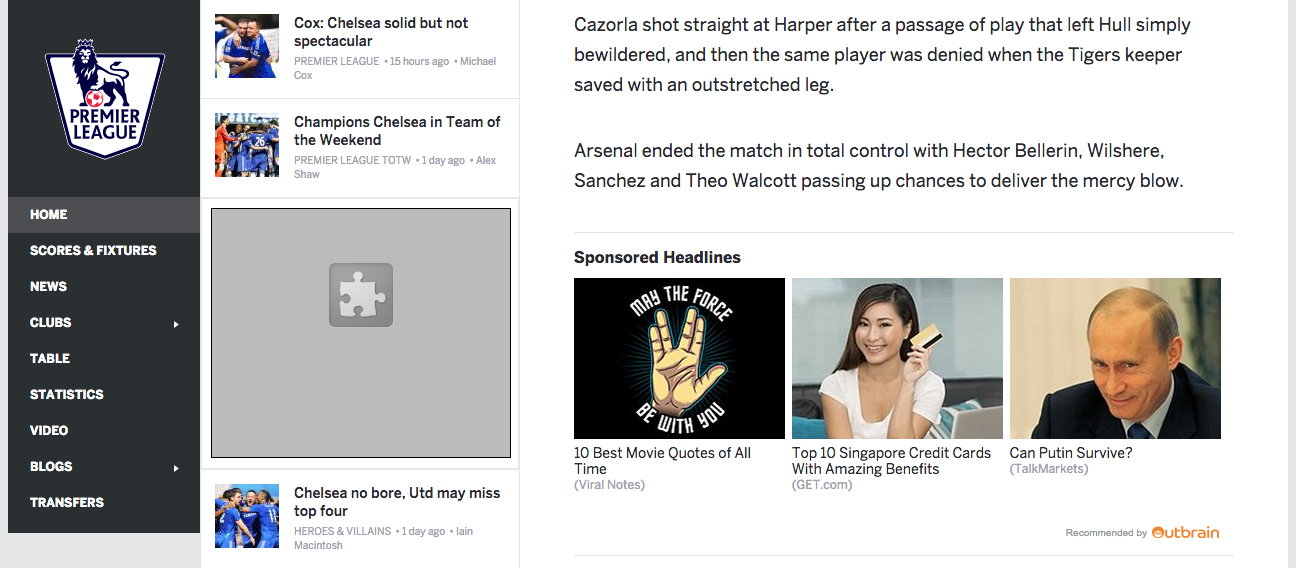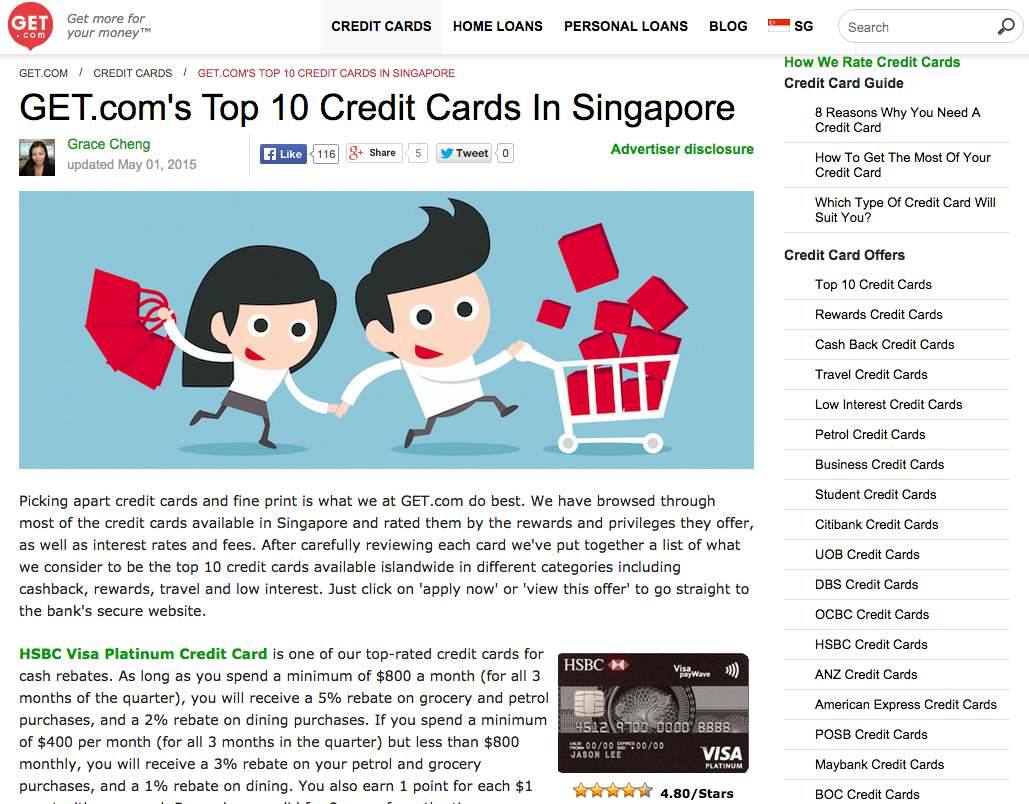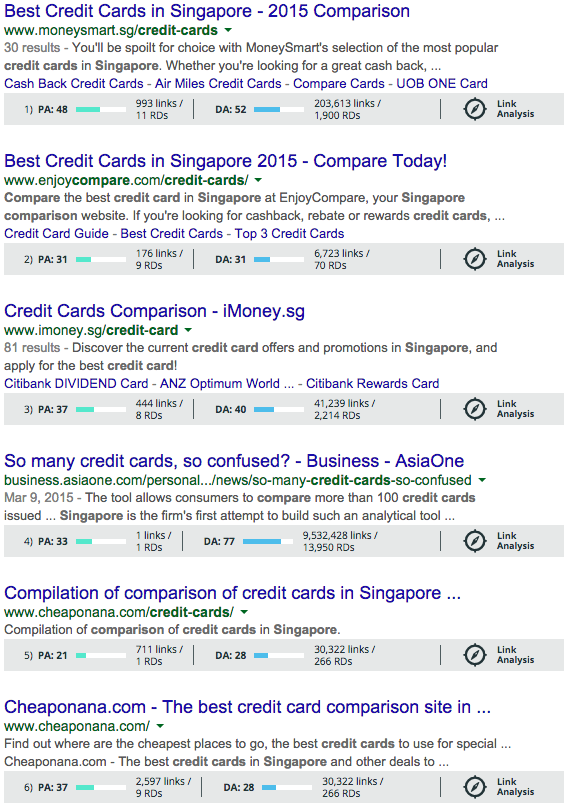I noticed a couple of months back that I was seeing a lot of ads for a website called GET.com. It brought to mind a half-remembered article I read in 2014 about the domain GET.com. After a little Googling, it turned out that GET.com had pivoted from being a coupon-code website to a personal finance portal centred around credit cards and deals. I loved the story about Grace Cheng and Pedro Pia growing their business from a forex trading blog to a personal finance website covering a variety of topics, all without venture funding. It's a path that is extremely difficult to walk, and takes a kind of courage that is uncommon even amongst gung-ho startup founders.

It is never my intention to lift the lid on any company's secret sauce, to the detriment of the company concerned. I first noticed GET.com's ads appearing on Outbrain last year, and since then their campaigns have expanded to include the Google Display Network. So much time has passed that I feel now is an appropriate time to share my thoughts about their excellent work so the rest of us may learn from it. This screenshot above shows the original ad used. In recent months, their advertising has expanded to include display ads as well.
The campaigns that they are running are not remarkable on the face of it. The ads are content-based and lead to a blog post (shown below) comparing the top credit cards in Singapore. There are lots of banks and financial institutions advertising all the time. Some are very aggressive with their seasonal campaigns, saturating online media a few times a year. Others opt for a more targeted approach, utilising Facebook in preference to the Google Display Network. Whichever it is, they all have their preferences and customers to cater to. What makes GET.com so remarkable is that they (seem to) have deliberately eschewed SEO as a means of customer acquisition even though they are creating high-converting content. This is a very bold choice!

The websites that rank well for the credit card comparison keyword niche are shown in the screenshot below. To get into the top 3 spots, you would need a Page Authority (PA) and Domain Authority (DA) of at least 31, not a trivial matter at all. Also, if you were to start creeping up on the competition, you're likely to start a brutal cycle of SEO competition, which could suck up a large amount of time and money. It's much better to run your campaigns on ad platforms under-utilised or downright ignored by your competitors.

Let's take a closer look at the search results above. Enjoycompare is really into SEO. Their page title is so optimised they even put in 2015. It's fairly common for people to append the current year to their Google searches to get only the latest results, and they've clearly chosen to exploit this. In addition, they have a paragraph or 2 on their homepage that links to some key product categories on their site, namely credit cards, loans and some banks. Companies like Zalora do this as well. It doesn't add much to the user experience, but adds one internal link with the targeted keyword as anchor text to the total body of internal links. It can be surprisingly effective since the homepage is the page with most of a website's SEO authority.

Notice that even though iMoney has both higher Page Authority and Domain Authority, their page ranks below Enjoycompare? If you click into both these pages, you'll notice that Enjoycompare's credit card descriptions are significantly longer. On-page word count is a ranking factor on Google. In addition, Enjoycompare implemented the Schema.org structured HTML markup, which confers some SEO advantages as well. It's a useful lesson, as this proves that one can be competitive even without the highest Page Authority and Domain Authority. However we should remember that the drawback in focusing on the above is that you're inevitably drawn into draining head-on competition.
For the reasons above, GET.com's decision to focus on the relatively cheap avenues of display ads and content networks like Outbrain is genius! If you want somewhere to start exploring alternative avenues for marketing, give this infographic by my friend Vijay.